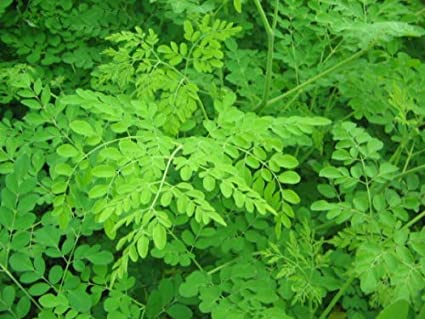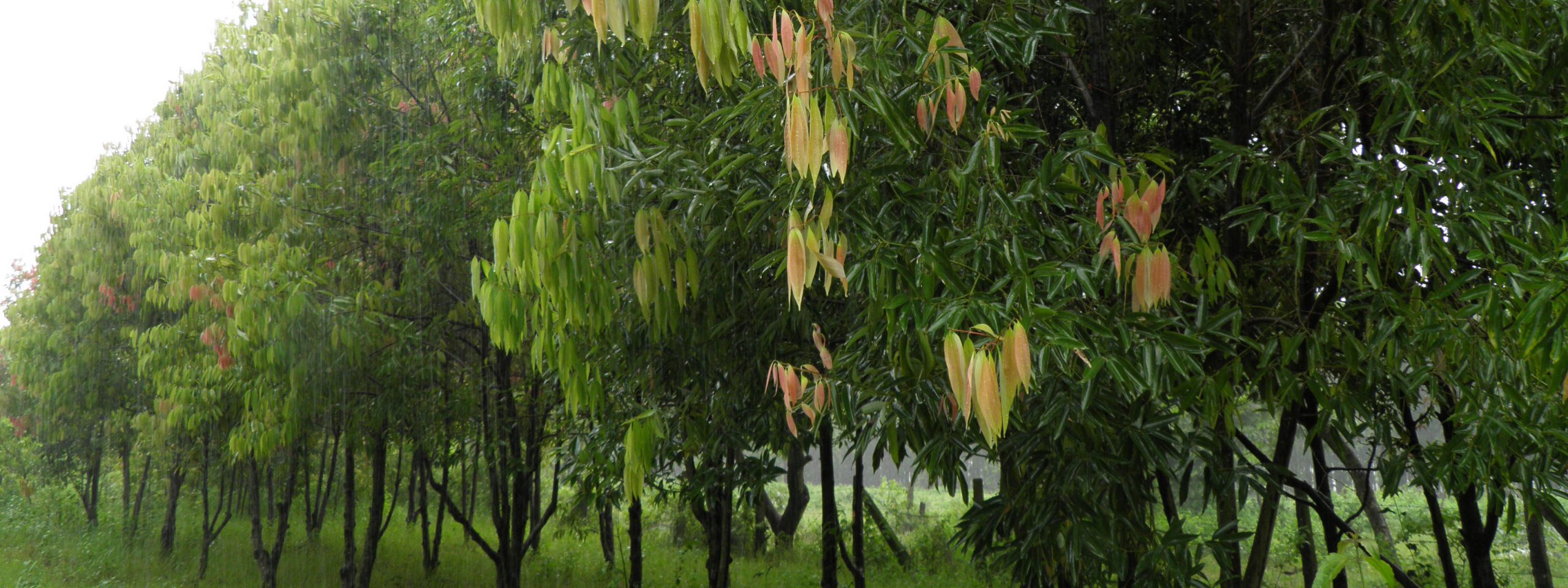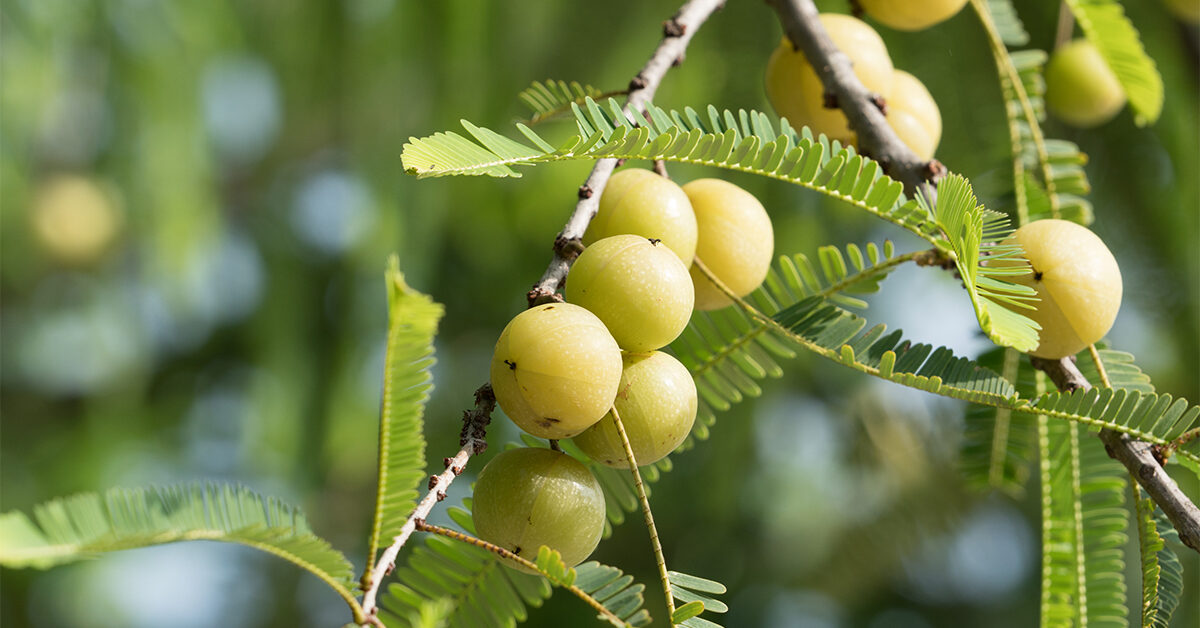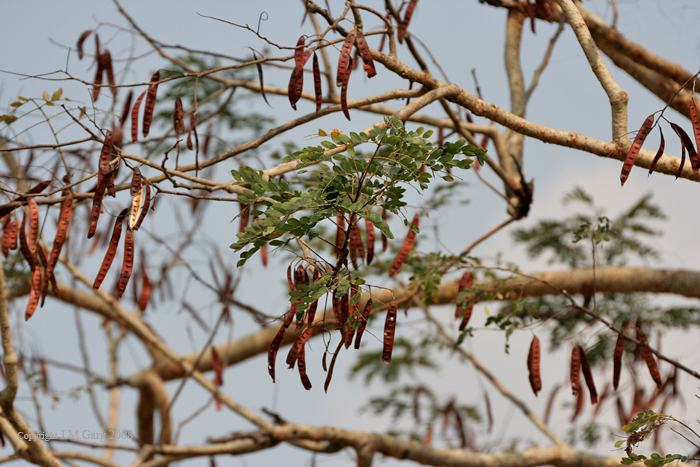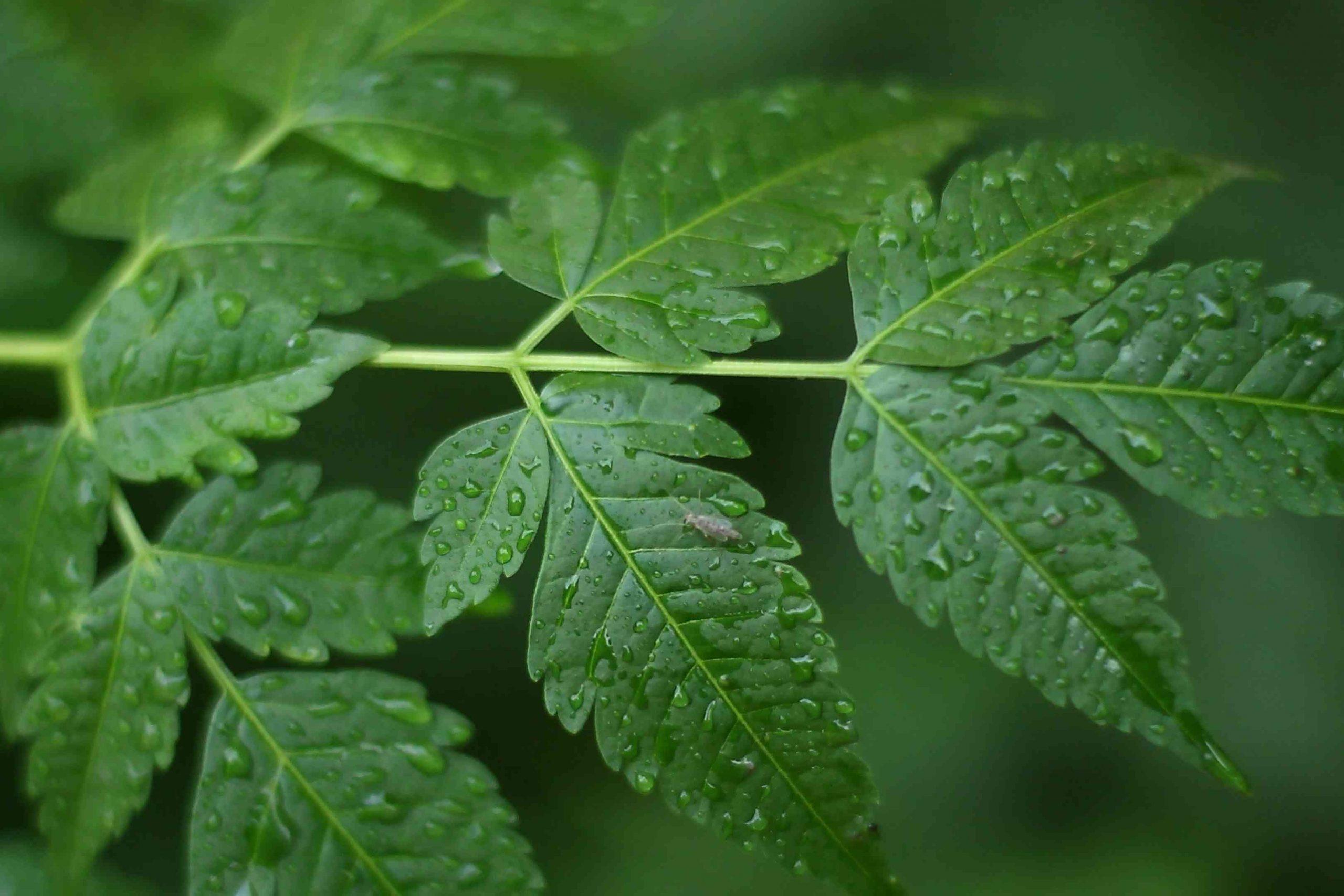Sitalchini
(Moringa oleifera Lam.)
English name: Drumstick tree/ Horseradish Tree
Family: Moringaceae
Origin and distribution It Moringa oleifera is indigenous in northern India and Pakistan. It has been introduced throughout the tropics and subtropics and has become naturalized in many African countries. It is found in tropical and sub-tropical lower belts of Nepal.
Description
Height at maturity: It is a small, graceful, deciduous shrub or small tree with a wide, umbrella-shaped, open crown and sparse foliage, often resembling a leguminous species at a distance. The tree grows to about 8 metres tall and base of 60cm in diameter. with e and can be 60cm in diameter. Young trees raised from seed start flowering after 1-2 years.
Form: It has a crooked bole that is often forked from near the base. The plant has a good coppicing ability.
Flower and flowering: The flowers are fragrant and hermaphroditic, surrounded by five unequal, thinly veined, yellowish-white petals. The flowers are about 1.0–1.5 cm (1/2 in) long and 2.0 cm (3/4 in) broad. They grow on slender, hairy stalks in spreading or drooping flower clusters, which have a length of 10–25 cm. In seasonally cool regions, flowering only occurs once a year between April and June. In more constant seasonal temperatures and with constant rainfall, flowering can happen twice or even all year-round.
Silvicultural Characteristics
Cultivation: Horseradish tree succeeds in warm temperate to tropical areas and can be found at elevations from sea-level to about 1,000 metres. It grows best in areas where annual daytime temperatures are within the range 20 – 35°c, but can tolerate 7 – 48°c. The plant is quite cold hardy and is not harmed by light frosts, but it can be killed back to ground level by a freeze. It quickly sends out new growth from the trunk when cut, or from the ground when frozen. It prefers a mean annual rainfall in the range 700 – 2,200mm, but tolerates 400 – 2,600mm
Soil: It can easily grow in a well-drained soil in a sunny position, tolerating a wide range of soil types. It grows best on fertile and well drained sandy soil, clay or clay loam but is in general suitable for light, medium and heavy soils though it will not withstand salinity. It has a special tolerance to shallow soil and is tolerant of low fertility. Prefers a pH in the range 5.5 – 7, tolerating 5 – 8.5
Propagation and plantation
Seed – can be sown either directly, in containers or in a nursery seedbed, preferably with around 50% shade. No seed pre-treatment is required and seeds sprout readily in 1 – 2 weeks. Plants can be ready for planting out within 3 months of germination. Plants raised from seed produce fruit of unpredictable quality. Germination rates for fresh seeds are around 80%, going down to about 50% after 12 months storage, but no seeds survive 2 years of storage. Stem cuttings are usually preferred because they root easily.
Products and uses
It can be used as cash crop. Young leaves, flowers, and shoots are raw or cooked as salad or vegetable. Bean-like pods are used in soups and curries, or made into pickle. The horseradish tree is a nutritious, diuretic, laxative herb that is expectorant, increases milk flow, controls bacterial infections and is rubefacient when applied topically. It contains a potent antibiotic.
Urban/Agroforestry uses
Hedge plantation provides protection against wind, shade and support for climbing garden plants. Widely used for live fences and hedges in many areas. Stakes root easily and are stable, and cuttings planted in lines are used particularly around houses and gardens. Because its shade can be controlled well Moringa oleifera is suitable for planting in alley cropping and in vegetable gardens. When trees reach 1.5 metres, farmers prune them (at 50cm from the ground or at ground level for older ones) once or twice a year. In alley cropping, an intra-row spacing of 2 metres is used. In the wet season cereals are grown between the lines, in the dry season vegetables.
Other readings
Tropical Plants Database, Ken Fern. tropical.theferns.info. 2021-04-21
Thapa, K., Poudel, M., & Adhikari, P. (2019). Moringa oleifera: A review article on nutritional properties and its prospect in the context of Nepal. Acta Sci. Agric, 3, 47-54.
